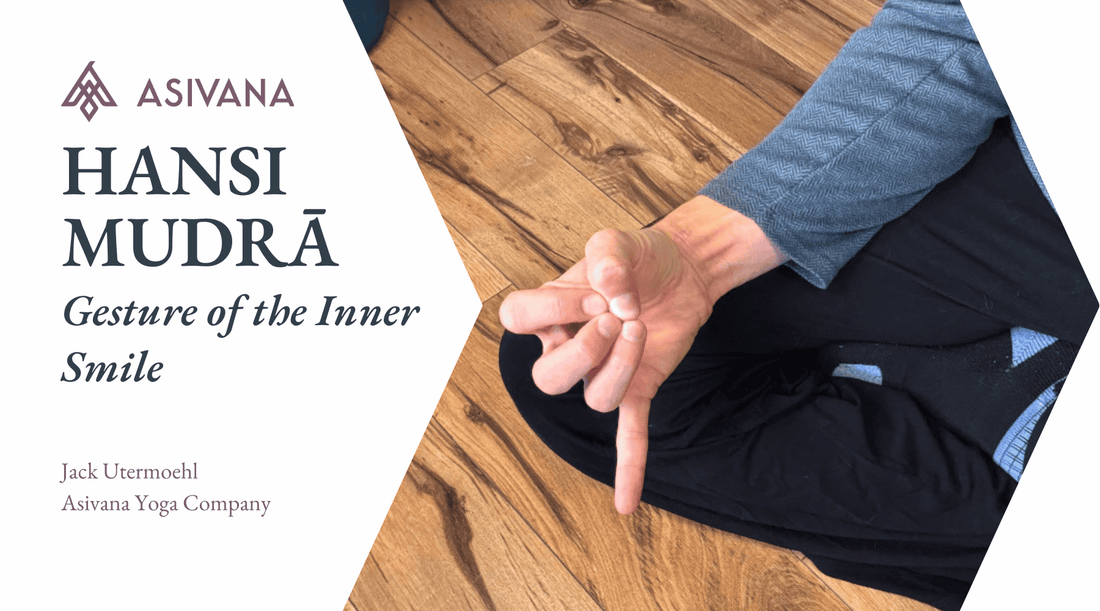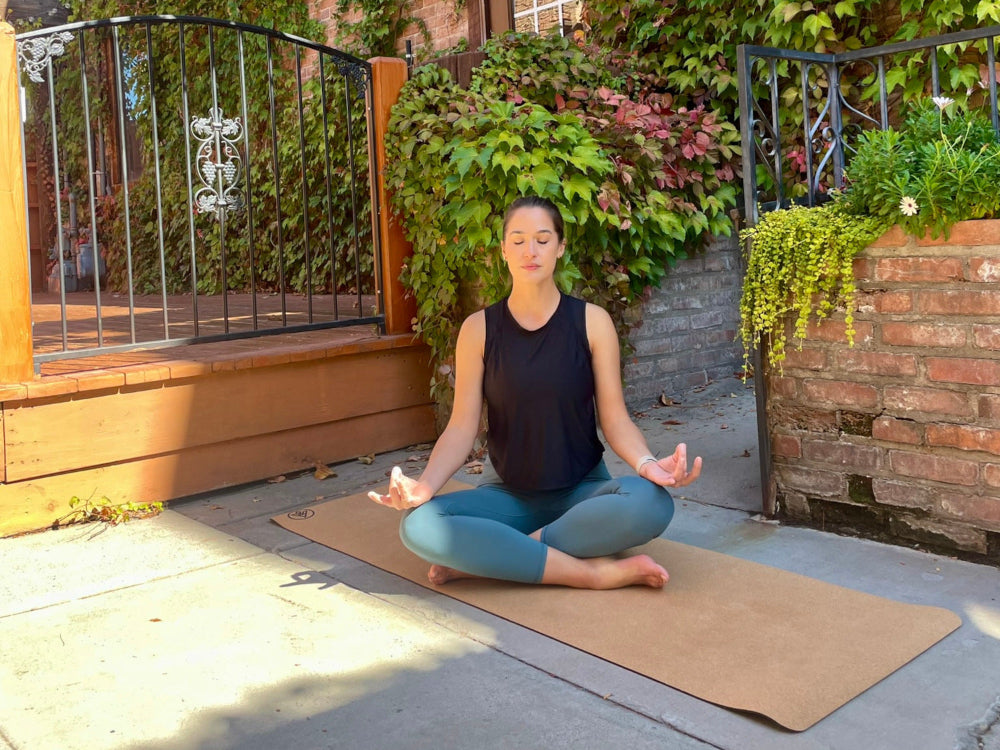
Hansi Mudra - Gesture of the Inner Smile
Jack UtermoehlShare
Hansi Mudra (Gesture of the Inner Smile)
Sanskrit Name: Hansi Mudrā - हंसी मुद्रा
English Translation: Gesture of the Inner Smile
Phonetic Spelling: HUN-see Moo-Drah
Hansi mudra, also known as the gesture of the inner smile, is a powerful mudra that invokes joy, positivity, and emotional well-being. Derived from the Sanskrit word hansi (smile), this mudra channels prana (life force) to uplift the spirit and create a joyful connection with oneself.
It is beneficial for creating happiness, reducing stress, and cultivating a light-hearted approach to life.
By aligning the thumb with the index, middle, and ring fingers, hansi mudra balances elements that help regulate emotional energy and promote a positive mindset.

Instructions to Perform Hansi Mudra
Sit comfortably in a chair or on the floor, maintaining an upright spine. Take several deep breaths to settle in.
Hand Position: Touch the tips of your thumb to the tips of your index, middle, and ring fingers. Extend your little finger outward. Rest the backs of your hands on your thighs or knees, or hold your hands out to the sides with your little fingers pointing upward.
Posture: Sit in sukhasana (easy pose) or vajrasana (thunderbolt pose). If you’re seated in a chair, ensure your feet are flat on the ground.
Breathing Technique: Inhale deeply through the nose, allowing your breath to fill your chest and belly. Exhale slowly, feeling a wave of relaxation wash over you as you focus on cultivating joy and contentment.
Duration: Practice hansi mudra for 5 minutes, focusing on your inner smile and positive energy.
Benefits of Hansi Mudra
Hansi mudra uplifts the spirit and encourages emotional resilience. It is beneficial for promoting a positive mindset and reducing stress.
Physical Benefits: Improves circulation, enhances lung capacity, and encourages deep, relaxing breaths.
Mental Benefits: Helps clear mental fog, sharpens focus, and creates a positive outlook.
Emotional Benefits: Encourages feelings of joy, positivity, and inner contentment. Reduces emotional stress.
Spiritual Benefits: Cultivates inner peace and happiness, connecting the practitioner to a sense of boundless joy.
Capture your insights and deepen your connection with our Yoga Journal.Elevate Your Mudra Practice
Symbolism and Meaning of Hansi Mudra
The word hansi means "smile" in Sanskrit, symbolizing an inner sense of happiness and contentment. Hansi mudra connects the practitioner to their heart’s joy and inner light, allowing them to experience happiness from within, independent of external circumstances.
The combination of fire, air, space, earth, and water elements in the fingers further strengthens emotional balance, grounding the practitioner while enhancing their inner joy.
When to Practice Hansi Mudra
Hansi mudra is perfect for meditation, pranayama, or any time you want to evoke happiness and calm. Practice it when feeling stressed, emotionally drained, or needing a mood boost.
It can also be integrated into your daily routine to maintain a positive outlook. A duration of 5 minutes is recommended, but even short moments can cultivate an uplifting effect.
Contraindications for Hansi Mudra
Hansi mudra is gentle and suitable for all practitioners. If discomfort arises in the fingers, modify the hand position or reduce the duration.
Additional Insights on Hansi Mudra
Affirmations: "I am joyful, calm, and resilient." / "I embrace my inner smile with ease and grace."
Visualization: As you hold hansi mudra, visualize a warm, golden light radiating from your heart, filling your entire being with joy and peace. Feel this light expand outward, dissolving any stress or tension.
Associated Chakras: Hansi mudra activates the Anahata (heart chakra), evoking love, joy, and emotional balance.
Paired Asanas: Works well with calming postures such as sukhasana (easy pose) or savasana (corpse pose) to cultivate relaxation and joy.
Related Pranayama: Pair hansi mudra with deep belly breathing or alternate nostril breathing (nadi shodhana) to enhance emotional balance and joy.
Meditation Techniques: Hansi mudra is ideal for loving-kindness meditation or gratitude meditation to cultivate a sense of joy and inner peace.
Variations and Modifications
Alternative Hand Positions: None
Adaptations for Beginners: Beginners may hold hansi mudra for shorter periods, such as 2 minutes, and gradually increase the duration. Resting your elbows on a cushion can provide additional comfort during longer sessions.
—— 🕉 ——

Personal Insights
A rather fun and complex mudra to perform. When I form hansi mudra, a smile immediately plants itself on my face. Not because I'm overwhelmed with joy from a mysterious place but because this playful, joyful, mudra reminds me of my childhood trying to make peculiar shapes with my fingers.
This reminder of an explorative and playful time in my life is why I enjoy hansi mudra. A Zen master once served a cup of tea to curious man. He poured and poured the tea and as the tea began to overflow the man exclaimed, "it's overflowing!".
The Zen master responded, "you cannot fill that which is already full". Meaning that a an empty mind may learn, a full mind cannot. Smile, relax, let it go, notice that inner smile.
Let us know your experience with hansi mudra below.











